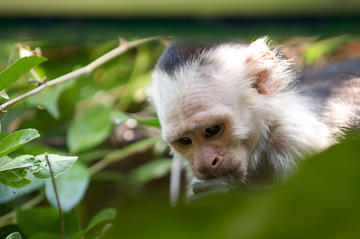Palo Verde National Park
TIME : 2016/2/22 10:17:09

Palo Verde National Park
If you are visiting the Guanacaste area, spend a day viewing Costa Rican wildlife at Palo Verde National Park (Parque Nacional Palo Verde). Located on the banks of the Rio Tempisque, the site has 15 different topographical zones, from those with mangrove swamps to others with evergreen forests. More than 60 bird species use the area as a migratory stop, and there are also about 75 mammal species, 55 reptile and amphibian species and about 250 species of bees here! This is nearly a quarter of the entire species of bees found worldwide.
The bees, along with a number of other insects and bats are found at the Lomas Barbudal Biological Reserve, adjacent to Palo Verde.
Marshes are common at Palo Verde during the wet season and welcome migrant birds from the Americas as winter sets in. Isla de Pajaros, Bird Island in English, is a popular mangrove spot for birds like green-backed herons, egrets, spoonbills and more. When the dry season approaches, wildlife congregates around the continually shrinking waterholes. Palo Verde is said to host the only native colony of scarlet macaws in the dry Pacific.
Sit quietly near one of the water sources and you might spot squirrels, howler monkeys, deer, and more. Palo Verde National Park is also the home for the largest population of jaguarundis, a small brown wild cat found in Costa Rica. Keep your eyes on the water floating down the river as American crocodiles – some as big as 15 feet long – call Rio Tempisque home.
Palo Verde National Park is home to one of the most endangered ecosystems in the tropics. The tropical dry forest once covered a significant portion of Central America and today, they are just a tiny fraction of their original size due to destruction from human development. Practical Info
Palo Verde National Park is approximately 20 miles away from San Jose and requires at least a few hours to explore. Much of it can be seen by boat, so be sure to pack sunscreen and bug repellent, as mosquitos are plentiful, primarily in rainy season. Due to its unique climate, be advised that there is a chance for flooding during the wet season (typically May through November). The ranger station is open from 8 a.m. until dusk and has restrooms available for visitors.
